Explore the enigmatic tale of Hiram Abiff's death, a cornerstone of Masonic lore, unveiling ancient wisdom and its enduring mysteries.
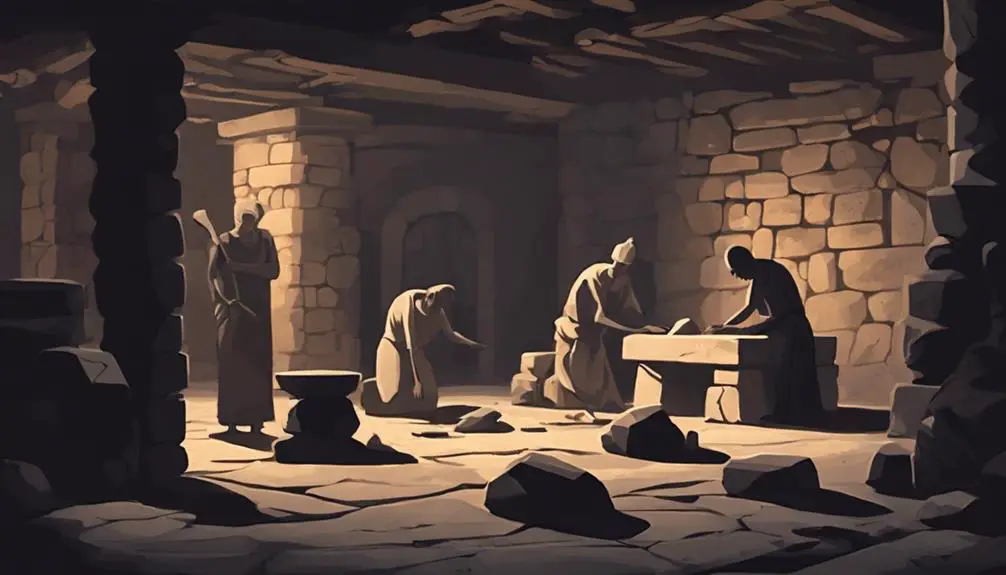
Death of Hiram Abiff in the Bible
While you might argue that the story of Hiram Abiff isn't directly mentioned in the Bible, it's pivotal in the lore of Freemasonry and carries deep symbolic meanings that have intrigued scholars and enthusiasts alike.
You'll find Hiram's role as the chief architect of King Solomon's Temple intriguing, especially when you consider the dramatic circumstances surrounding his death. This tale, laden with betrayal and the quest for ultimate knowledge, not only enriches the Masonic tradition but also offers a unique lens through which to view ancient wisdom and its impact on modern societies.
Let's explore the layers of symbolism and interpretation that have kept this story alive for centuries, and why it remains relevant today.
Key Takeaways
- Hiram Abiff's story is central to Freemasonry but lacks presence in the Biblical narrative.
- The tale symbolizes loyalty, integrity, and craftsmanship, pivotal to Masonic teachings.
- Historical accuracy of Hiram Abiff's story is debated among scholars.
- His death serves as an allegorical moral lesson within the Masonic tradition.
The Legend Explored
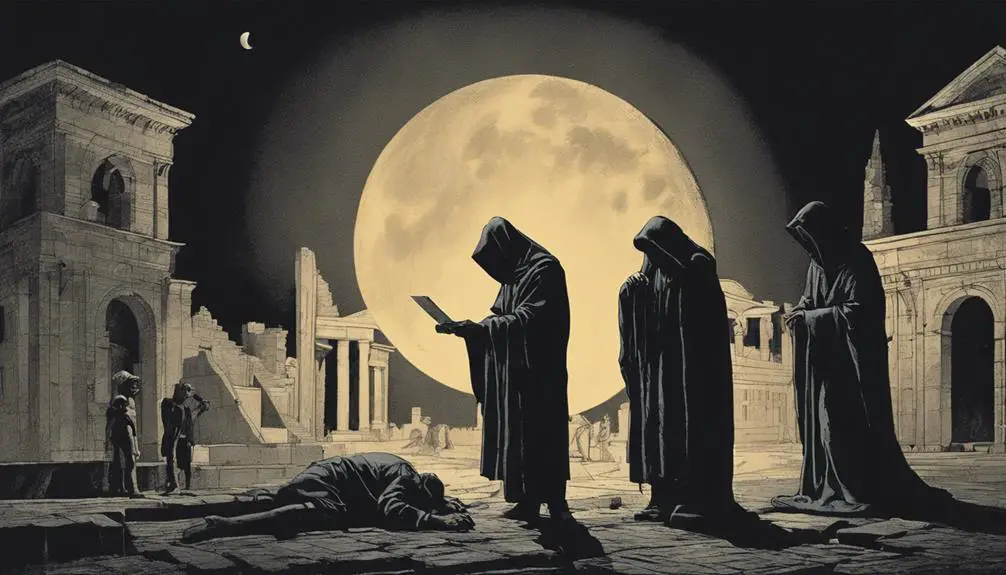
Delving into the legend of Hiram Abiff reveals a rich tapestry of Masonic lore, intertwined with symbolic meanings and moral teachings. You'll find that the historical accuracy of this legend is a topic of much debate among scholars and historians.
The account of Hiram Abiff, while not explicitly detailed in the Bible, draws upon biblical references to Hiram, a craftsman of great skill hired by King Solomon to work on the Temple in Jerusalem. This connection to biblical narratives lends the legend a semblance of historical grounding, yet it's important to approach the story with an understanding that its primary purpose is allegorical rather than historical.
The exploration of the legend's historical context requires a careful examination of the biblical references to Hiram and the historical period in which he'd have lived. While the Bible provides a backdrop, the Masonic legend embellishes and expands upon Hiram's story to teach moral and ethical lessons. This blending of historical elements with allegorical teachings challenges you to consider the importance of symbolic narratives in conveying moral principles, even when they diverge from historical accuracy.
Hiram Abiff's Role
In the Masonic tradition, Hiram Abiff's role as the master architect of King Solomon's Temple embodies the core principles of loyalty, integrity, and masterful craftsmanship. This character, while not explicitly named in the canonical Bible, has sparked considerable debate regarding historic accuracy and Biblical presence. Scholars and Masons alike delve into the allegorical and symbolic meanings of Hiram Abiff, analyzing his importance not just in Freemasonry, but in the broader context of historical and religious studies.
Aspect |
Emotional Impact |
|---|---|
Loyalty |
Inspires admiration and a deep sense of respect for commitments. |
Integrity |
Invokes a strong moral compass, guiding one's actions towards honesty. |
Craftsmanship |
Awakens a sense of pride in one's work, striving for excellence. |
Analyzing the historic accuracy of Hiram Abiff's role emphasizes the blend of myth and history that often accompanies religious and traditional narratives. The lack of direct Biblical presence, yet significant inclusion in Masonic lore, underscores the complex interplay between documented history and the traditions that arise from it, inviting you to reflect on the ways in which stories evolve and gain meaning over time.
The Fateful Day
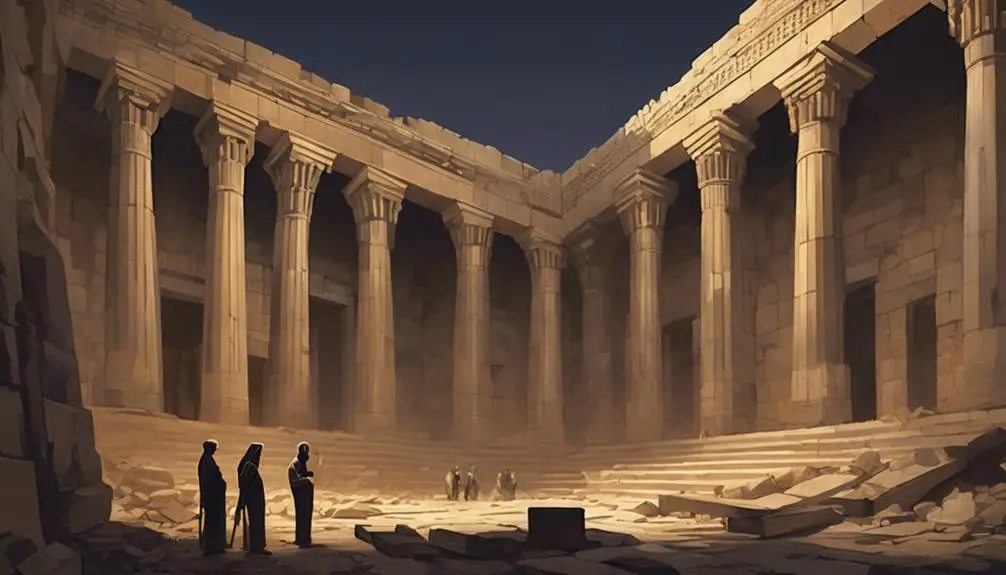
Reflecting on Hiram Abiff's virtues brings us to the pivotal moment of his demise, marking a critical juncture in Masonic storytelling. The fateful day of his death isn't merely a tale of loss, but a complex narrative embedded with layers of historical context and questions of Biblical accuracy.
- Historical Context: The narrative of Hiram Abiff, while not explicitly detailed in the Bible, aligns with the period of King Solomon's reign, suggesting a backdrop rich in the lore of ancient Freemasonry and its symbolic significance.
- Biblical Accuracy: The account raises questions about its direct correlation with Biblical texts, as the story of Hiram Abiff's death is more elaborately found in Masonic tradition than in the Scriptures.
- Critical Juncture: This moment is crucial in Masonic lore, symbolizing the embodiment of loyalty and integrity, thereby serving as a moral compass for Freemasons.
- Narrative Complexity: The story's depth is amplified by its historical and biblical ambiguities, making it a subject of intrigue and scholarly analysis.
In dissecting the fateful day, it's essential to navigate the fine line between myth and history, acknowledging the narrative's role in Masonic rites while scrutinizing its historical and biblical foundations.
Symbolism and Interpretation
The symbolism and interpretations surrounding the death of Hiram Abiff often serve as a cornerstone for Masonic teachings, shaping the values and ethics within the fraternity. This narrative, while not found explicitly in the Bible, highlights the complexities and biblical discrepancies that arise when this Masonic allegory is compared to scriptural texts.
Aspect |
Symbolism |
Interpretation |
|---|---|---|
Death |
End of mortality, beginning of immortality |
Transition to higher knowledge |
Hiram Abiff |
Master builder, keeper of secrets |
Integrity, loyalty, and steadfastness |
Three ruffians |
Ignorance, fanaticism, and ambition |
Challenges and trials in one's journey |
These elements intertwine to provide a rich fabric of moral and ethical teachings. The story of Hiram Abiff, when dissected, serves as a powerful Masonic allegory, emphasizing perseverance, fidelity, and the eternal pursuit of truth. Despite the biblical discrepancies, the allegorical interpretation enriches the Masonic tradition, offering lessons that transcend the literal narrative. It's a testament to the fraternity's ability to find deep, symbolic meanings in stories, whether they are rooted in historical texts or not.
Impact on Freemasonry
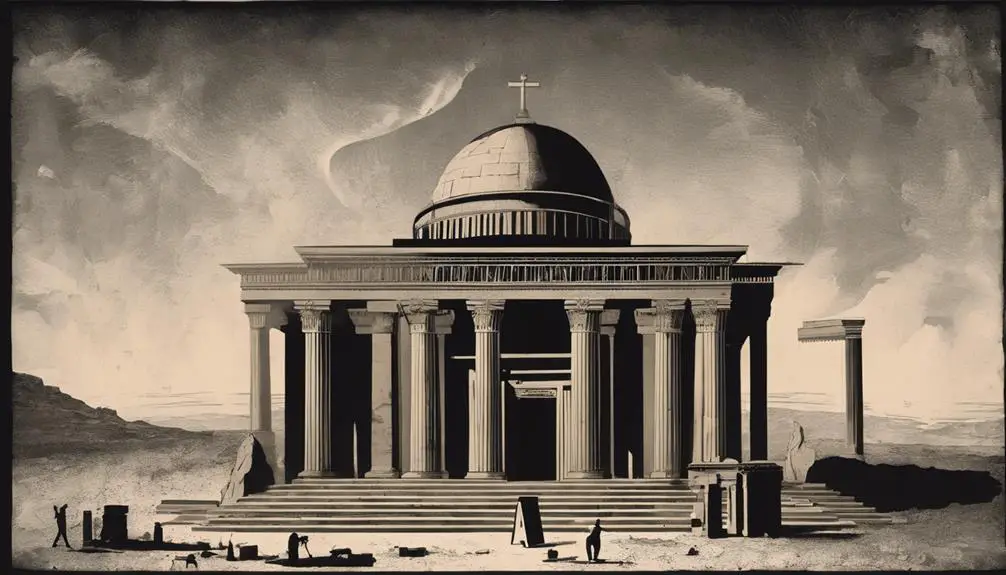
Exploring the narrative of Hiram Abiff's death reveals its profound impact on Freemasonry, shaping its rituals, values, and communal identity. This story, central to Masonic tradition, isn't just a tale from the past but a living part of the Masonic experience, deeply influencing the fraternity's ethos and practices.
- *Masonic rituals*: The dramatization of Hiram Abiff's story is a core component of Masonic ceremonies, particularly during the initiation of new members. It serves as a powerful allegory for loyalty, integrity, and perseverance.
- *Ethical teachings*: Freemasonry embeds the moral lessons of Hiram Abiff's story into its ethical teachings, advocating for virtues such as fidelity, honor, and truthfulness among its members.
- *Communal identity*: The collective reflection on Hiram Abiff's death fosters a sense of unity and shared heritage among Freemasons, reinforcing the bonds of brotherhood and mutual support.
- *Evolution of tradition*: Over time, the interpretation of Hiram Abiff's story has evolved, reflecting changes in societal values and the fraternity's understanding of its own teachings.
Through these aspects, the narrative of Hiram Abiff's death continues to be a cornerstone of Freemasonry, guiding both its ceremonial practices and its moral compass.
Frequently Asked Questions
How Does the Story of Hiram Abiff Compare to Similar Narratives in Other Ancient Religions or Mythologies?
You'll find that the story of Hiram Abiff shares heroic parallels and mythological motifs with tales from other ancient religions.
When analyzing these narratives, it's evident that themes of sacrifice, rebirth, and enlightenment are universal.
These elements serve as foundational threads weaving through the fabric of many mythologies, highlighting the shared human experience.
Such comparisons enrich your understanding of these stories, revealing deeper, interconnected meanings across different cultures and eras.
Are There Any Archaeological Findings That Support the Existence of Hiram Abiff or the Events Described in the Legend?
You're diving into a mystery as deep as an ocean, searching for archaeological evidence to prove Hiram Abiff's existence or the events of his legend.
Despite the allure, no concrete findings directly link to him or the exact scenarios depicted. However, Masonic rituals and symbolic interpretations deeply embed his story, suggesting its influence rather than historical accuracy.
The tale's essence lies more in its meaning than in tangible proof.
How Has the Tale of Hiram Abiff Influenced Modern Literature, Art, or Film?
You'll find the tale of Hiram Abiff has deeply influenced modern culture.
It's woven Masonic symbolism into various literary works, inspiring themes of loyalty, integrity, and sacrifice.
In the realm of art and film, the story's architectural inspiration is evident, showcasing grand designs and symbolic structures.
This narrative hasn't only enriched storytelling but also infused a rich layer of symbolism and architectural marvel into modern creative expressions.
What Are the Psychological Implications of the Hiram Abiff Story on Individual and Collective Levels, According to Contemporary Psychological Theories?
You're diving into how stories shape us on deep psychological levels. According to contemporary theories, tales like these play a crucial role in identity formation and tap into our collective unconscious.
They mirror our personal and shared experiences, influencing how we see ourselves and our communities. It's not just about the narrative itself but how it resonates within, helping us navigate our inner worlds and understand the complexities of human nature.
Can the Story of Hiram Abiff Be Interpreted in Ways That Align With or Contradict Feminist or Post-Colonial Critiques?
You can analyze the story through feminist and post-colonial lenses, focusing on gender roles and post-colonial identity. This perspective might reveal how traditional narratives uphold or challenge contemporary views on equality and autonomy.
Feminist critiques could explore power dynamics and representation, while post-colonial analyses might examine the story's implications for identity formation in a colonized context.
Both approaches offer valuable insights into the societal constructs that shape our understanding of history and culture.
Conclusion
In the tapestry of religious and esoteric narratives, Hiram Abiff's death stands as a poignant juxtaposition of mortality and immortality, anchoring his story firmly within the realms of Freemasonry and biblical interpretation.
You witness a narrative that, on one hand, mourns the loss of a master craftsman, while on the other, celebrates the enduring legacy of wisdom and enlightenment he symbolizes.
This duality enriches the Masonic tradition, offering a profound reflection on the nature of sacrifice, knowledge, and eternal life.


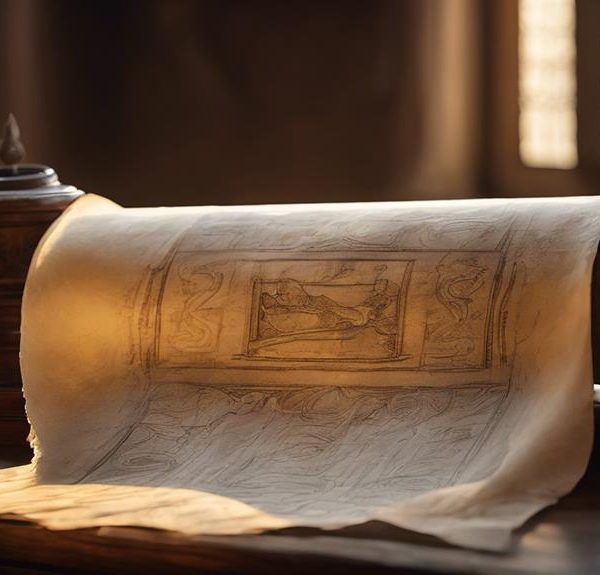
Sign up